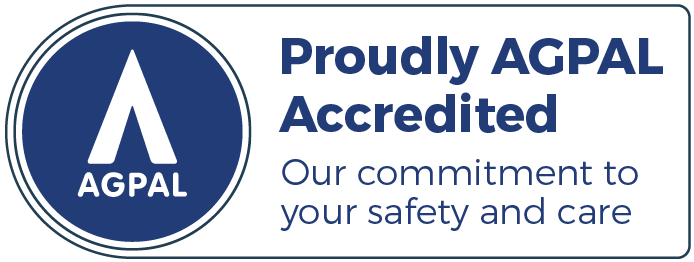Nourishment and bonding are the two key benefits of breastfeeding which are highly recommended by experts. This activity helps provide nutrition to babies at their golden age while protecting them against infections and diseases.
You’ve come to the right place if you’re a new mum wondering how to breastfeed correctly and overcome some breastfeeding challenges.
Find out more information on expert-assisted breastfeeding below!
What is Exclusive Breastfeeding?

Exclusive breastfeeding (EBF) is when an infant is given only breastmilk, without any other liquids or solids included, for the first six months.
Why six months? Studies found that this EBF period poses several benefits, from a lower chance of gastroenteritis to a lower risk of pneumonia and recurrent otitis media (ear infection), compared to babies with less than six months of EBF period.
Benefits of Breastfeeding

Breastfeeding offers various benefits for both the mother and the baby.
For The Baby
There are three main benefits of breastfeeding:
- Promotes healthy growth and development overall.
- Enhances bonding with the mother.
- Lower risks of some illnesses. This includes gastrointestinal infections, atopic disease, obesity, SIDS, type 1 and 2 diabetes, some cancers, urinary tract infections, and respiratory and middle ear infections.
For The Mother
Similarly, this nurturing activity also brings positive health impacts for the mother, including lower risk of breast cancer, ovarian cancer, osteoporosis, obesity, and cardiovascular disease.
In addition, it assists the uterus in returning to its initial state and helps with weight loss!
How To Breastfeed

Are you new to breastfeeding? Follow this step-by-step guide to help you get started.
First Feed
- Within the first hour after the first skin-to-skin interaction, babies will automatically show they are ready to feed by placing their hands near their mouths. Ask your midwife to assist you during your first breastfeeding to ensure comfort.
Mothers Breastfeeding Position
There are two possible breastfeeding positions: lying down or sitting down.
- Lying down:
- Rest on your side with a pillow supporting your head.
- Place your baby beside you, facing you.
- Switch sides by rolling over when necessary.
- Sitting down:
- Sit straight with a pillow-support back and arm.
- Position your lap almost flat.
- Make your feet flat on the floor (use a footstool if necessary).
Baby’s Breastfeeding Position
Experiment with various positions to make your baby comfortable and fed well.
- Positioning:
- Cradle your baby in your arms.
- Ensure your baby’s head, shoulders, and body are straight.
- Keep your baby close to your body.
- Alignment:
- Make sure your baby’s nose or top lip is opposite your nipple.
- This allows easy access to the breast without straining the neck or body.
- Feeding:
- Move your baby toward your breast.
- Ensure your baby’s chin touches the breast.
- Support:
- Always support your baby well and keep them close during feeds.
Attaching Your Baby
To prevent your nipples from getting sore and ensure enough milk for your baby, attach your baby well to the breast. A well-attached baby can be seen in their:
- Wide-open mouth
- Breast-touching chin
- Short-to-long sucking pattern (with pauses)
- Attachment comfort
- Bottom lip alignment
- Areola visibility
- Curled-back bottom lip
To ensure your baby gets a comfortable attachment, follow these steps:
- Position your baby in the previously described position.
- Wait until your baby’s mouth is wide open.
- Quickly bring your baby to your breast when their mouth is wide open, aiming your nipple towards the roof of their mouth.
Breastfeeding Challenges

While breastfeeding can be easy for some mothers, it may not be the same for others, especially new mums. Common challenges are:
Personal Comfort
For new mums, this nurturing experience may feel uncomfortable at first. However, you’ll get used to it after practices backed with proper support and education.
Latch-on
Latch-on, or the process of your baby attaching to your breast during breastfeeding. It can be challenging due to positioning difficulties, discomfort, or inadequate milk transfer.
Time and Frequency of Feedings
Newborns feed frequently, sometimes every 1-2 hours, which can be exhausting for mothers. Balancing their needs with your own well-being and daily routines can be demanding. In addition, ensuring consistent feeding intervals and recognising hunger cues can be tricky.
Diet
What mothers eat contributes to the milk passed to the baby, so it’s essential to ensure they get enough nutrients. Increasing the intake of fruits, vegetables, dairy, and whole grains while decreasing added sugars, saturated fat, and sodium can be a good start.
Frequently Asked Questions
What if I can’t breastfeed?
You can explore alternatives like formula feeding or expressed breast milk if you can’t breastfeed. Consult a health professional for the best alternative.
Are babies who are breastfed smarter than those who are not?
While breastfed babies may do better when they grow up, breast milk is not the sole reason. A supportive environment also plays a role in shaping their cognitive development.
How do I know if my baby is getting enough milk?
During breastfeeding, your baby begins with rapid sucks, followed by rhythmic sucking and swallowing, staying calm and relaxed. After feeds, they come off the breast independently, and you may notice moist mouths, contentment, softer breasts, and unchanged nipples. You might also feel sleepy and relaxed.
Conclusion
Breastfeeding is a nurturing activity to ensure your child gets essential nutrients to support their growth. While this activity needs a lot of effort, especially for new mums, you will get used to it after proper education and support.
If you encounter challenges during breastfeeding, contact Wells Road Medical Centre now. We provide comprehensive support for mothers’ pre-and post-natal care and friendly, nurturing care for infants, toddlers, and teens’ development.



